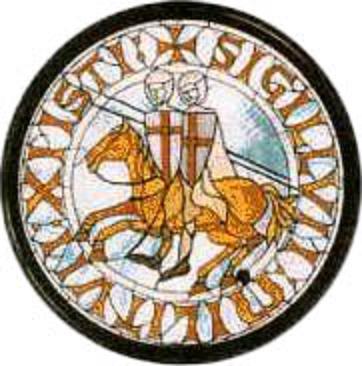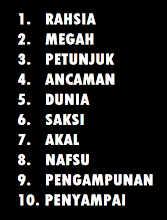Scottish Rite bergabung bersama York Rite sehingga tertubuh nyerr pertubuhan rahsia ini.
Diantara objectif mereka ialah mempertahankan Jerusalem dan meluaskan lagi negara Israel sehingga tercapai nyer "Promise Land".
 The Knights Templars were a military and religious order first established in AD 1118 in Jerusalem by nine French knights under the leadership of Hugues de Payens of Champagne and Godefroi de Saint- Omer (Ibid., 49). Their stated mission was to protect pilgrims on their way to the Holy Land during the crusades (Collier's Encyclopedia, 1985 "Knights Templars"). They also fought in various battles of the crusades and became famous for their bravery (World Book Encyclopedia, 1969 "Knights Templars"). "Baldwin II, King of Jerusalem, gave the Knights Templars quarters in his palace, built on the site of Solomon's Temple." From this, the order derived its name — Knights of the Temple.
The Knights Templars were a military and religious order first established in AD 1118 in Jerusalem by nine French knights under the leadership of Hugues de Payens of Champagne and Godefroi de Saint- Omer (Ibid., 49). Their stated mission was to protect pilgrims on their way to the Holy Land during the crusades (Collier's Encyclopedia, 1985 "Knights Templars"). They also fought in various battles of the crusades and became famous for their bravery (World Book Encyclopedia, 1969 "Knights Templars"). "Baldwin II, King of Jerusalem, gave the Knights Templars quarters in his palace, built on the site of Solomon's Temple." From this, the order derived its name — Knights of the Temple.
Membership in the Knights Templars was originally limited to nobles. However, later on, the order opened its ranks to other men whom it felt could be used to further its aims. The order grew rapidly and in the year 1128 was taken under the special protection of the pope (Collier's Encyclopedia, "Knights Templars").
During the Crusades, the Knights Templars established local offices in all the Christian countries to encourage enlistment in crusading armies and to take care of funds for the pilgrims. (The pilgrims gave donations to the Order — which existed as a tax-exempt organization — in exchange for protection to and from Jerusalem). The Templars, being composed mostly of nobles, were also granted favors by many European rulers and gained possession of property throughout the continent. Through gifts of land and money, the Templars became extremely wealthy and powerful (Collier's Encyclopedia, "Knights Templars").
After the fall of Jerusalem to Saladin in 1187, the order established its headquarters in Acre. The Templars were forced to relocate once again in 1291 when Acre fell to the Muslims. This time their headquarters were moved to the island of Cyprus. However, by then, the Templars, through their enormous wealth and wide-spread organization, had become the bankers of Europe, and the order was no longer primarily a military one. It was especially influential in Spain, France, and England, where commanderies of knights, men-at-arms, and chaplains were organized, each under its own superior, subordinate to the Grand Master of the order (Ibid.).
Morals and Dogma adds, "Their watchword was, to become wealthy in order to buy the world. They became so, and in 1312, they possessed in Europe alone more than nine thousand seignories" (Morals and Dogma, 819-820). (A seignory refers to the estate or dominion of a noble or feudal lord).
The Knights Templars were probably corrupt from the beginning. But whether the order started out degenerate or became this way later, it is certain that the Templars had, during their exploits in the Middle East, become strongly influenced by both the Gnostics and the Assassins (a ruthless Arabic military order). It is a fact that several of the founders of the Knights Templars were initiates in the sect of the Assassins (Edith Starr Miller, Occult Theocracy. Hawthorne, CA; The Christian Book Club of America, 1933, p.143). The Templars, while adopting the religious beliefs of the Gnostics, received many of their organizational and political traits from the Assassins. The Templars represented the first wide-scale attempt to organize and mobilize the forces of occultism for the purpose of gaining control of the world.
Occult historian Edith Starr Miller summarizes the demise of the Templars as follows:
Pope Clement V, however, refused to respond to the charges and confessions of the Templars.
Clement V, deeply resenting the King's interference with an order which existed entirely under papal jurisdiction, wrote in the strongest terms of remonstrance to Philippe le Bel urging their release, and even after their trial, neither the confessions of the Knights nor the angry expostulations of the King could persuade him to believe in their guilt (Ibid., p.53).
The pope was not only slow to respond to the confessions but actually did what he could to protect the order. Later on, however, he gave the following reasons for his actions (in his own words):
"Because it did not seem likely nor credible that men of such religion who were believed often to shed their blood and frequently expose their persons to the peril of death for Christ's name, and who showed such great and many signs of devotion both in divine offices as well as in fasts, as in other devotional observances, should be so forgetful of their salvation as to do these things, we were unwilling . . . to give ear to this kind of insinuation . . . (hujusmodi insinuacioni ac delacioni ipsorum . . . aurem noluimus inclinare)." (Ibid., p.51, Michelet, Proces des Templiers).
Due to mounting pressure from a suspicious public and because a number of the confessions before Philip IV were allegedly made under torture, the pope finally decided to mount his own investigation, consenting to receive in private audience "a certain Knight of the Order, of great nobility and held by the same Order in no slight esteem" (Ibid., 53). Upon being questioned by the pope, the Knight "testified to the abominations that took place on the reception of the Brethren, the spitting on the cross, and other things which were not lawful nor, humanly speaking, decent."
Pope Clement V then decided to examine seventy-two other French Knights at Poictiers in order to discover whether their earlier confessions before the Inquisitor for France were true. These hearings were conducted without torture, with the witnesses taking an oath promising "the full and pure truth." The Templars' Grand Master, Jacques de Molay and the French leaders of the order were likewise questioned in the presence of three Cardinals, four public notaries, and many others (Ibid.). Before these many witnesses the Templars admitted their crimes as previously confessed during the trials of King Philip IV (Ibid., 53-54). The Knights Templars, as it turned out, had been masters of deception, experts in duplicity, appearing to serve Christ on the surface while worshiping Lucifer within their inner rites.
Morals and Dogma confirms this character. "The Templars, like all other Secret Orders and Associations, had two doctrines, one concealed and reserved for the Masters . . . the other public . . . Thus they deceived the adversaries whom they sought to supplant." (Morals and Dogma, 817-818).
"The Pope, however, still refused to take action against the whole Order merely because the Master and Brethren around him had gravely sinned" (Webster, Secret Societies, 54). Instead, he decided to hold a papal commission in Paris which took place in November 1309. But by then, the word about the Templars was out and the public had become outraged. In addition to Italy and France, "Templars in England, Germany, Spain, and Portugal also stood trials, but most were acquitted" (World Book Encyclopedia, 1969, "Knights Templars").
Philip IV of France, more than any other monarch, pursued the members of the Order and sentenced many of them to death, charging them with conspiracy and Satan worship. On 12 May 1310 he had fifty-four French Templars burned alive in Paris (Miller, Occult Theocracy, p.144). In 1312, Pope Clement V was finally persuaded to abolish the Order (World Book Encyclopedia, 1969, "Knights Templars"). And on 18 March 1314, the Grand Master, Jacques de Molay, along with three of his highest ranking officers, were burned at the stake (Miller, Occult Theocracy, 144). It is this diabolical knight after whom today's Masonic Order of De Molay, reserved for young men, was named.
Following the death of De Molay, the Templars found refuge in Portugal under King Dinis II who became their protector (Ibid., 145). The Order suffered a temporary setback resulting from the confiscation of most of its property; but it remained influential, continuing to operate underground. Morals and Dogma attests to the survival of the Knights Templars stating that De Molay, prior to his execution, created four Metropolitan Lodges, at Naples for the East, at Edinburgh for the West, at Stockholm for the North, and at Paris for the South. [The initials of his name . . . found in the same order in the first three Degrees, are but one of the many internal and cogent proofs that such was the origin of modern Freemasonry . . . ] (Morals and Dogma, 820).
In a continued reference to the Templar order, Morals and Dogma adds: ". . . it lived, under other names and governed by unknown Chiefs, revealing itself only to those who, in passing through a series of Degrees, had proven themselves worthy to be entrusted with the dangerous Secret." (Ibid., 821).












0 comments:
Post a Comment